Kray twins Ronnie and Reggie ran the streets of London's East End in the swinging 1960s — and they made crime and decadence look good.
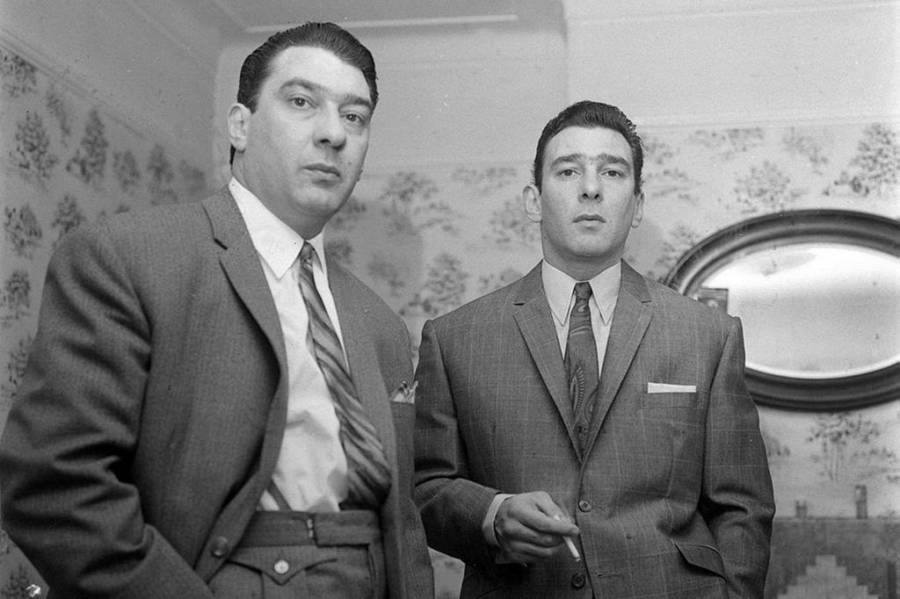
TwitterThe Kray twins, Ronnie and Reggie, in 1966.
Ronnie and Reggie Kray, better known as the Kray twins, remain perhaps the most infamous criminals in London’s rogue gallery of gangsters throughout history. During the 1960s, they ruled the streets of London’s rough-and-tumble East End.
And while some crime lords kept their heads down and went about their business, the Kray Twins never kept a low profile as they carried out everything from armed robberies to arson while hobnobbing with politicians and celebrities — as portrayed in the 2015 film Legend — before they were finally brought to justice.
The Early Years Of The Kray Twins
Ronnie and Reggie Kray were born within ten minutes of each other on Oct. 24, 1933, in Hoxton, London. From a young age, the twins had both a taste for violence and an apparently insatiable desire to become somebody.
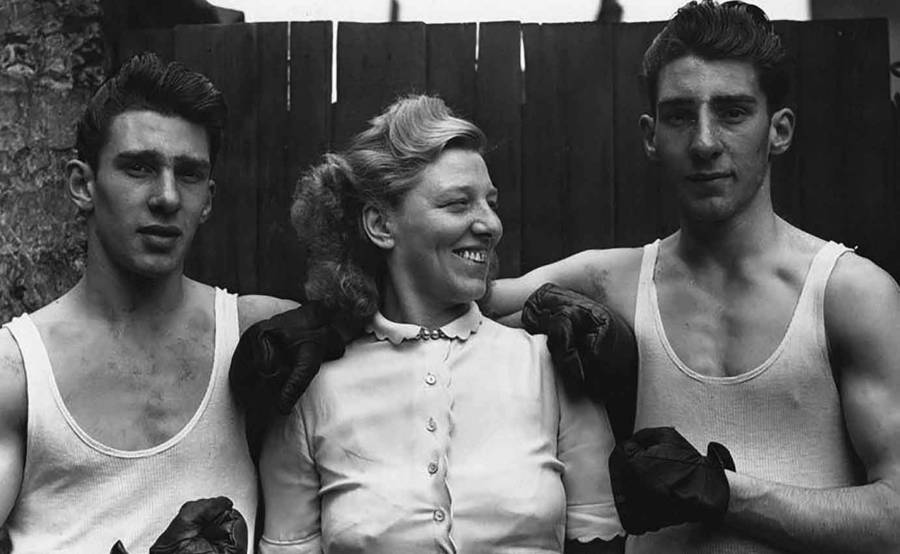
Facebook17-year-old Reggie (left) and Ronnie (right) with their mother, Violet Kray, in 1951.
As VICE reported, like their grandfather Jimmy “Cannonball” Lee before them, the Kray brothers got their schooling in taking and giving a beating early on when they took up boxing. Both became amateur champions.
Meanwhile, they displayed some of the differences in character that would inform their future lives as criminals. Reggie was a calmer, more disciplined boxer, while Ronnie showed early signs of his rabid desire to win no matter the cost.
And soon, the Kray twins took their fighting into the streets — and got themselves into trouble. They started getting involved in gangland activity on the streets of the East End.
As Reggie recounted in his memoir Born Fighter, when the Krays were 16, the cops charged them with grievous bodily harm after they attacked a rival gang outside of a dance hall.
Two years later, they were called for National Service. Instead, in 1951, they assaulted a police officer and ended up spending a month in prison. While there, they acted so violently and rambunctiously — including dumping a latrine bucket on a sergeant, handcuffing a guard to the prison bars, and setting their own beds on fire — that they were dishonorably discharged from the army soon after being conscripted.
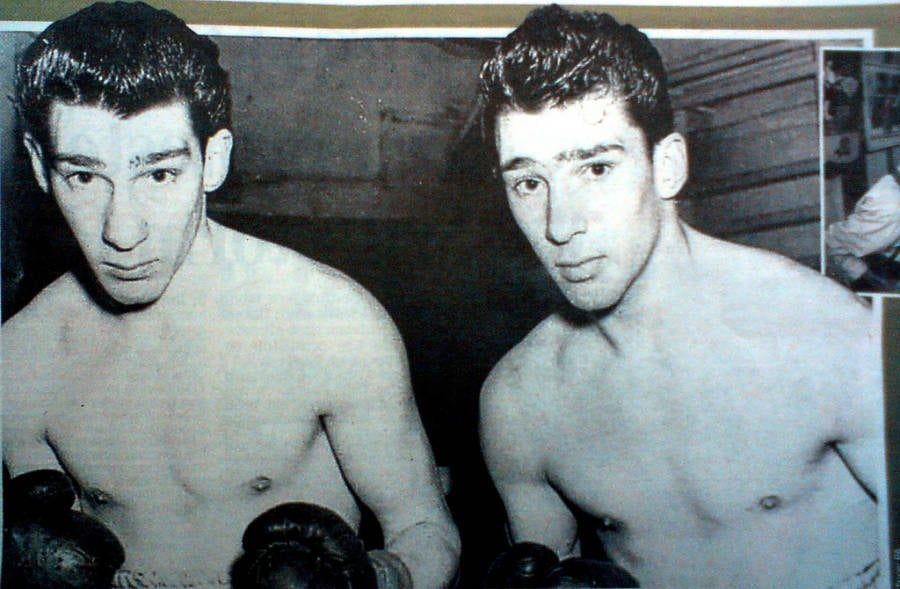
FlickrThe Kray brothers in boxing gear as young men.
But soon, they would take their criminal activities to even greater heights. While making a name for themselves thanks to armed robbery and hijacking, they also got into the nightclub business, starting out by turning a small, rundown club in Bethnal Green into a respectable joint. And so they started their ascent of the London underworld.
Ronnie And Reggie Kray: Kings Of Gangland London
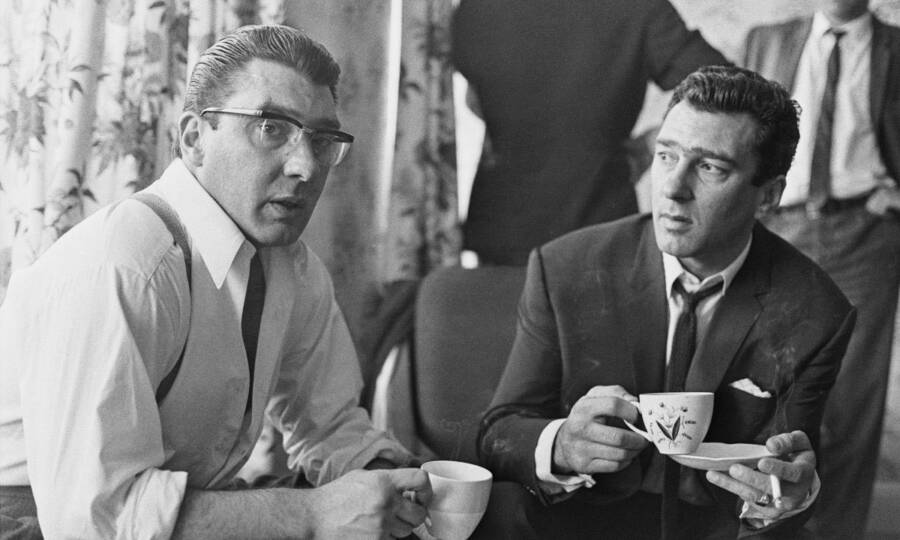
TwitterThe Kray twins were equal parts celebrity and gangster.
As up-and-coming gangsters, the Kray brothers had a particular role model: the stylish “boss of Britain’s underworld,” Billy Hill, who according to the Guardian controlled Soho in the 1950s.
Like Hill, the Kray twins bought and paid for their more legitimate businesses with the proceeds from their criminal activities. As they expanded into protection rackets, arson, armed robbery, and sales of black market cigarettes, they also expanded their nightclub empire by purchasing a string of clubs in the East End as well as central London.
But although the Krays had a semi-legitimate approach to making money, violence was still integral to how they operated. While both were capable of extreme violence, Ronnie’s angry flare-ups grew uncontrollable. In 1954, members of a Maltese gang tried to collect protection money from the twins in their newly acquired Regal Billiard Hall. Ronnie’s response was to attack them with a cutlass.
Meanwhile, to legitimize their appearance despite their criminal activities, Ronnie and Reggie Kray maintained an elaborate façade by organizing donations to charity, building a reputation as generous philanthropists.
But Ronnie’s erratic behavior began to erode any notion of their respectability. According to the British Newspaper Archive, in 1956, he received three years in prison after slashing and stabbing a man with a bayonet.
While Ronnie was away, Reggie developed their business and criminal interests. By 1957, he had opened the Krays’ signature club, the Double R, and established their gang called “the Firm.”
Meanwhile, in prison, Ronnie was struggling with his mental health. In 1958, he transferred to an asylum in Surrey, where doctors diagnosed him with paranoid schizophrenia and administered sedative drugs. Eventually, Reggie was declared sane and transferred back to prison.
But upon his release in 1959, Ronnie no longer bore an identical resemblance to Reggie. Prison had taken its toll on Ronnie. He became thickset in face and body and was perhaps even more prone to violent outbursts.
Rulers Of Swinging Sixties London
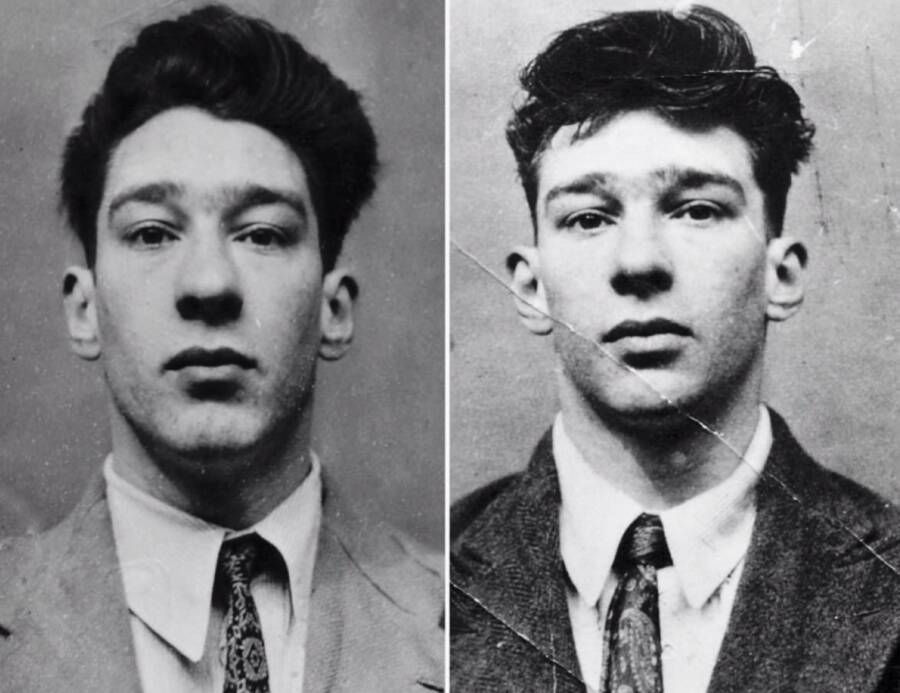
TwitterEarly mugshots of the Kray twins.
With Ronnie out of prison and their gang established, the Kray twins became criminal celebrities who owned around 30 popular nightclubs, bars, and restaurants. In his autobiography, My Story, Ronnie recalled:
“They were the best years of our lives. They called them the swinging sixties. The Beatles and the Rolling Stones were rulers of pop music, Carnaby Street ruled the fashion world… and me and my brother ruled London. We were fucking untouchable.”
With their network of nightclubs established, the Kray brothers were in their element and free to be who they wanted to be.
In 1960, the Kray twins acquired Esmeralda’s Barn, a club in the West End. Ronnie felt more comfortable being open about his bisexuality in this part of London. Soon he began hobnobbing with a number of high-society gay men that included politicians, actors, and businessmen.
While accounts vary, it’s generally reported that both twins were bisexual, though Ronnie identified more as gay and Reggie more so exhibited interest in women, according to the Mirror. In 1960, Reggie started a relationship with Frances Shea, the teenage sister of Firm member Frank Shea. Ronnie became Reggie’s best man at the wedding five years later.
Ronnie’s love life, meanwhile, didn’t proceed so smoothly. The Kray twins’ friends included influential Conservative Lord Boothby. Scotland Yard became aware of a relationship between Ronnie and Boothby and developed a dossier on the pair. By the summer of 1964, authorities planned a major operation against them.
But when news of the scandalous relationship (homosexuality was a crime in 1960s Britain) between Ronnie and Boothby broke in the Sunday Mirror, Boothby threatened to sue the newspaper. The paper backed down, and after a £40,000 out-of-court settlement, newspapers buried any further stories linked to the Krays.
The Kray Brothers And The American Mafia
For years, Ronnie dreamed of turning the Kray twins’ empire into a version of the New York Mafia’s infamous killing factory known as Murder, Inc. And in the 1960s, he got his wish. As reported in the book The Kray Files: The True Story of Britain’s Most Notorious Murderers, the American Mafia advised Ronnie on how to adopt its principles for London gangs, and an important trans-Atlantic criminal alliance was born.
But this connection with the Mafia ratcheted up tensions with the Richardson gang, also prominent in London. The Kray twins wanted to expand their gambling interests with the Mafia’s help, but Ronnie felt the Richardson gang was beginning to encroach on their turf. To make matters worse, George Cornell, a Richardson henchman, reportedly called Ronnie a slur at the Astor Club in December 1965. A gang war broke out.
Things escalated on March 7, 1966, when someone killed Firm member Dickie Hart in a shootout and Cornell was believed to be responsible. Then, on March 9, 1966, the Krays learned Cornell was drinking at the Blind Beggar, a pub on the Krays’ turf in the East End. An incensed Ronnie entered the pub — and calmly shot Cornell in the head right in front of everyone.
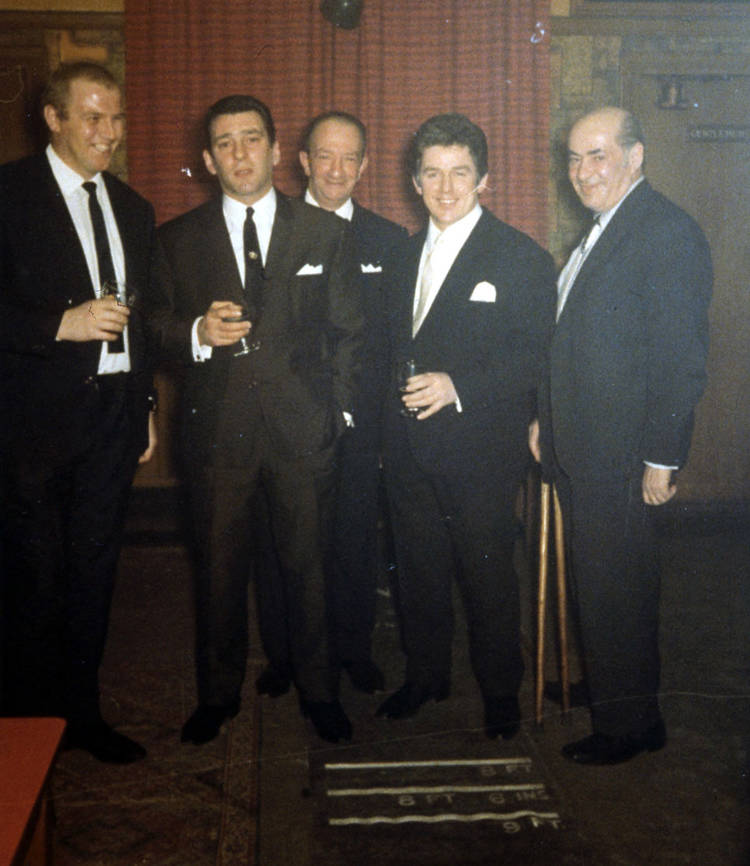
Wikimedia CommonsReggie Kray (second from left) in 1968.
Though the cops arrested Ronnie, intimidation from The Firm’s goons ensured that no one snitched on him. And when the barmaid was questioned as a witness, she failed to identify Ronnie. Ronnie walked free.
A year later, Reggie too would be in trouble for murder. Though they kept evading justice, the Kray twins’ downfall was on the horizon.
The Kray Twins’ Trial And Incarceration
By 1967, Reggie’s two-year-old marriage had taken a turn. In her diary, Frances Shea claimed Reggie came home drunk every night and verbally abused her, and that she tried to get her marriage annulled because it was never consummated. On June 7, feeling trapped in the couple’s Marble Arch flat, Shea tragically died by suicide via a drug overdose at the age of just 23.
The resulting emotions may explain why, just a few months after his wife’s death, Reggie viciously murdered Firm member Jack “The Hat” McVitie after McVitie failed to kill Leslie Payne, a former associate of the Kray twins.
When McVitie showed up at a party in northeast London that October, Reggie tried to shoot him, but the gun jammed. After a struggle, Ronnie reportedly held McVitie down as Reggie killed him in brutal fashion, stabbing McVitie in the face, stomach, and chest before impaling him through the throat to the floor with a carving knife. No one ever found McVitie’s body.
The murders were the turning point in Scotland Yard’s ongoing investigation into the Ronnie and Reggie Kray. Under more pressure than ever, members of the Firm finally began to snitch on the twins. On May 8, 1968, the police arrested both Krays at their mother’s flat. A year later, the twins received life behind bars for the murders of Cornell and McVitie.
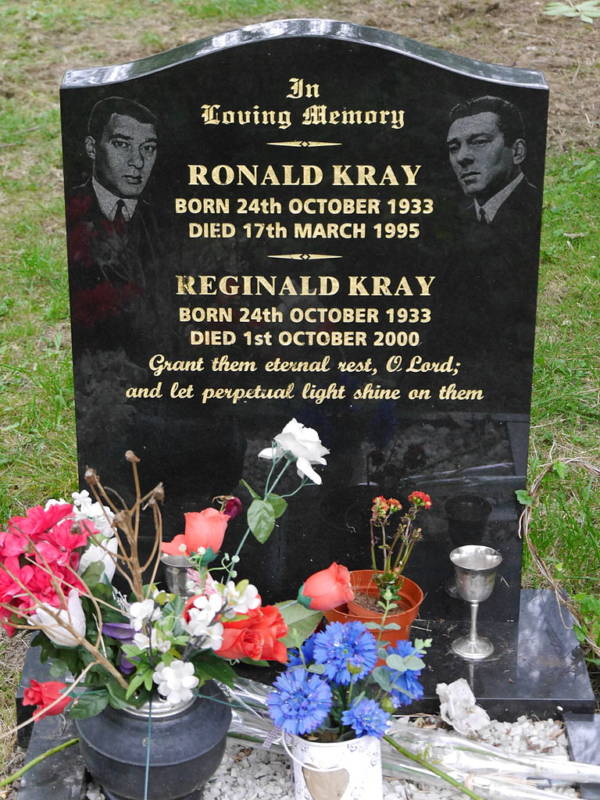
FlickrThe grave of Ronnie and Reggie Kray.
Even in prison, though, they never strayed from their scheming ways. They operated a bodyguards-for-celebrities business from behind bars, with Frank Sinatra reportedly one of their clients.
Ultimately, Ronnie died of a heart attack in March 1995, aged 61. In 2000, Reggie was released on compassionate leave after being diagnosed with terminal bladder cancer. Within weeks, Reggie too was dead, and the story of the Kray twins had finally come to an end.
After this look at Ronnie and Reggie Kray, read up on the Teddy Boys who terrorized 1950s England. Then, discover the stories of history’s most famous gangsters.





